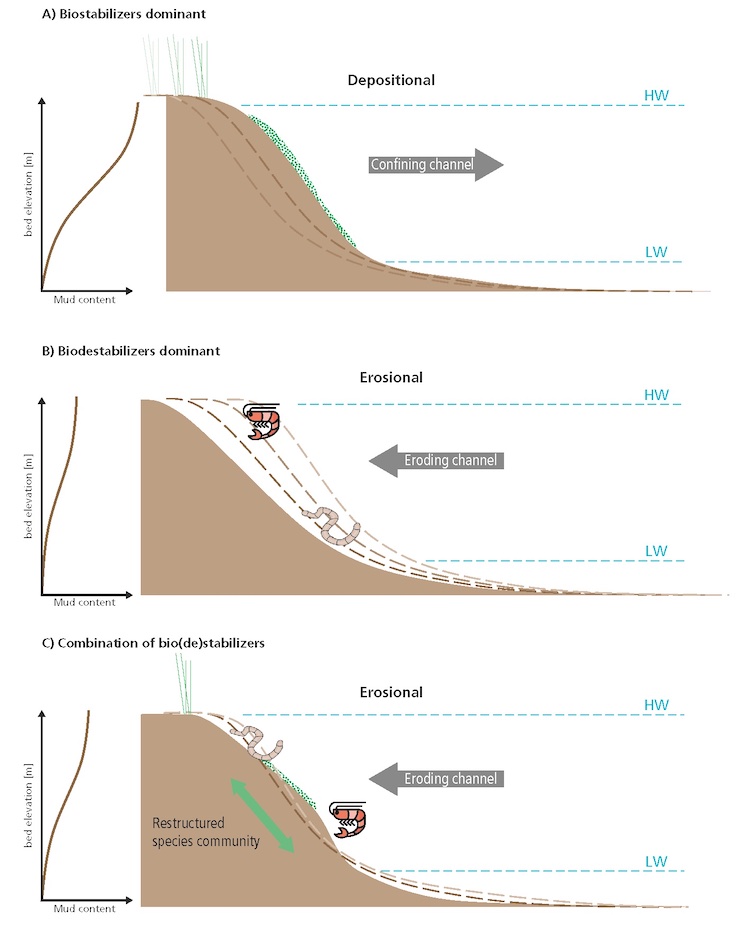M.Z.M. Brückner1*, C. Schwarz2, G. Coco3, A.W. Baar4, M. Boechat Albernaz1, M.G. Kleinhans1
Introduction
Benthic species that live within estuarine sediments stabilize or destabilize local mud deposits through their eco-engineering activities, affecting the erosion of intertidal sediments. Possibly, the altered magnitudes in eroded sediment affect the large-scale redistribution of fines and hence morphological change.
Methods
To quantify this biological control on the morphological development of estuaries, we numerically model i) biofilms, ii) two contrasting bioturbating species present in NW-Europe, and iii) their combinations by means of our novel eco-morphodynamic model. The model predicts local mud erodibility based on species pattern, which dynamically evolves from the hydrodynamics, soil mud content, competition and grazing, and is fed back into the hydromorphodynamic computations.
Results & conclusions
We find that biofilms reduce mud erosion on intertidal floodplains and stabilize estuarine morphology, whereas the two bioturbators significantly enhance inter- and supratidal mud erosion and bed elevation change, leading to a large-scale reduction in deposited mud and a widening of the estuary (Fig. 1). In turn, the species-dependent changes in mud content redefines their habitat and leads to a redistribution of species abundances. Here, the eco-engineering affects habitat conditions and species abundance while species interactions determine species dominance. Our results show that species-specific biostabilization and bioturbation determine large-scale morphological change through mud redistribution, and at the same time affect species distribution. This suggests that benthic species have subtly changed estuarine morphology through space and time and that aggravating habitat degradation might lead to large effects on the morphology of future estuaries.

Fig. 1: Conceptual channel adaptation and mud content in an estuary dominated by biostabilization (A), biodestabilization (B), and a combination of biostabilization and -destabilization (C).
I. Surname1*, F.N. Another-Surname2 , Y. Next-Surname2
1 University Name, Country; 2 Organization Name, Country
* Corresponding author: mail.name@organization.org


